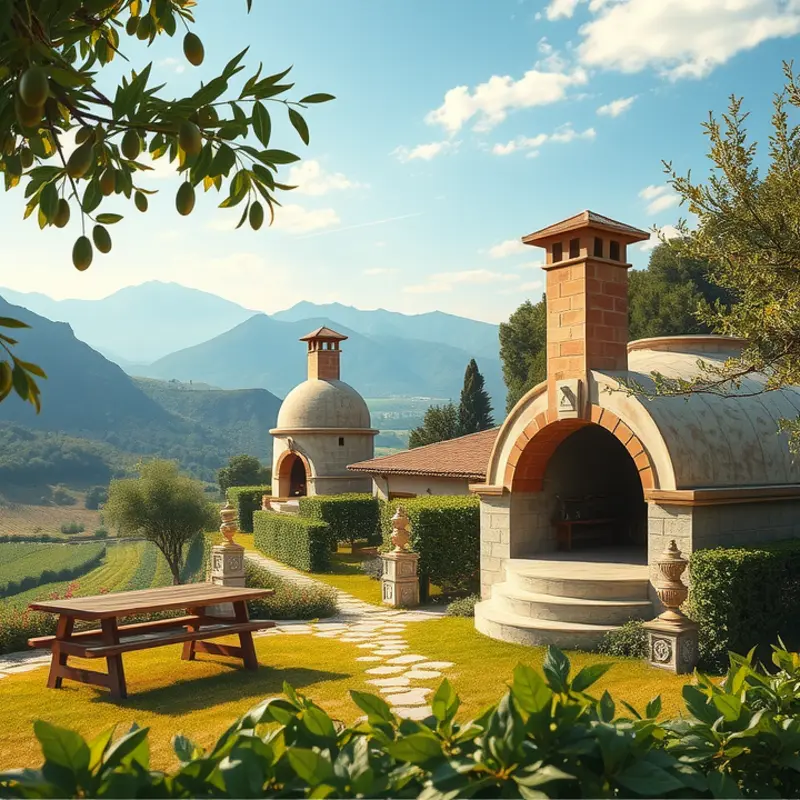Across the globe, traditional cooking stones serve as a bridge between ancient culinary practices and modern flavors. From the volcanic stones of Hawaii to the enduring methods practiced in Mediterranean kitchens, these natural elements are not merely tools; they embody cultural heritage and unique gastronomic experiences. Dive into the stories and techniques that celebrate these remarkable cooking stones as we explore their significance in various cuisines.
The Volcanic Heart: Cooking Stones in Hawaiian Cuisine

Hawaiian cuisine is a vibrant tapestry woven from the bountiful gifts of the land and sea. At the center of this culinary tradition lies the imu, an underground oven heated by volcanic stones. These stones, carefully selected from riverbeds or coastal areas, retain and emit intense heat, transforming the imu into an environment that slowly infuses flavor into every ingredient it embraces.
The imu process begins with heating the stones in a large pit. Once they reach the desired temperature, layers of banana leaves and sometimes ti leaves are added to create a bed for the food. Whole pigs, chickens, and a rich array of local produce often claim their place in this culinary haven. The stones’ heat, combined with the steam created from the leaves, results in a smoky flavor and melt-in-the-mouth texture that is truly unparalleled.
This method is not merely about preparing food; it is a practice imbued with cultural significance and historical depth. In ancient times, the construction and maintenance of an imu were community events, demanding collaboration and labor from friends and family. This communal effort solidified bonds and reinforced cultural ties, making the imu not only a cooking technique but a bridge between past and present generations.
Immersed in cultural meaning, the gathering and feasting around the imu symbolize the sharing of abundance. Whether during a luau, a wedding, or any celebratory gathering, the act of imu cooking fosters a sense of belonging and connectedness. As the stones cool and the food emerges, fragrant and tender, participants recount stories, share laughter, and continue traditions that may date back centuries.
While modern conveniences gradually find their place in contemporary Hawaiian cooking, the imu persists, a testament to the enduring legacy of traditional methods. It serves as a reminder that some of the most meaningful culinary experiences go beyond tastes and aromas. They reside in the companionship formed around the preparation and the celebration of food.
To explore more about how cultural practices shape culinary traditions, you might find this resource on island cooking with coconuts valuable. Reflecting on these practices can deepen our appreciation for the intertwined nature of food and culture.
Stone Age Techniques: The Mediterranean Tradition

The Mediterranean region, renowned for its vibrant cuisine, has long embraced the art of cooking with stones. This method, rooted in ancient traditions, offers a unique way to infuse flavors that are both rich and authentic. Greece and Italy, in particular, have preserved centuries-old recipes that highlight the subtleties of this age-old technique.
In Greece, the use of hot stones, or “psistaria,” has been integral in crafting dishes that capture the essence of the land. One iconic dish is the stone-baked lamb. Traditionally, whole lambs are seasoned with local herbs like oregano and thyme and cooked atop heated stones in an earthen oven. This slow-cooking method allows the lamb to absorb the earthy aromas, resulting in a tender, flavorful meat that practically melts in the mouth.
Similarly, Italy, with its diverse culinary landscape, highlights the stone-baking technique in its celebrated stone-baked pizza. Imagine a dough with a delicate balance of crispness and chewiness, crowned with sun-ripened tomatoes and fresh mozzarella. The secret lies not just in the ingredients, but in the stones heated in a wood-fired oven. These stones provide an even distribution of heat, crafting the perfect crust that is both pillowy and crunchy. This method enhances the pizza’s character, offering a taste experience that transcends the ordinary.
In addition to enhancing textures, the use of cooking stones in the Mediterranean cuisine serves as a culinary alchemy, where simple ingredients transform into profound flavors. This technique echoes a commitment to authenticity and sustainability—a dining philosophy that values both past and present.
Cooking with stones is more than a method; it’s a cultural touchstone that highlights the importance of slowing down and appreciating not just the food, but its preparation. This approach aligns with the principles of mindful eating, emphasizing a deeper connection to meals that bring families and communities together.
As we navigate the colorful tapestry of Mediterranean cooking, it becomes evident that stone age techniques are not mere remnants of the past but a testament to the enduring traditions that continue to enrich modern cuisines. Each dish is a narrative, a glimpse into a culinary heritage that has stood the test of time, drawing from the vibrant mosaic of earth’s most fundamental elements.
Final words
The rich tapestry of culinary traditions woven through the use of cooking stones offers a glimpse into the past while fostering communal ties in the present. From the warmth of an imu filled with local ingredients in Hawaii to the aromatic experience of a stone-baked pizza in Italy, these methods showcase not only the art of cooking but also the stories of the people who preserve these techniques. By embracing traditional cooking stones, we honor our shared heritage and invite fresh perspectives on global cuisines, encouraging a deeper appreciation for the foods that connect us all.








